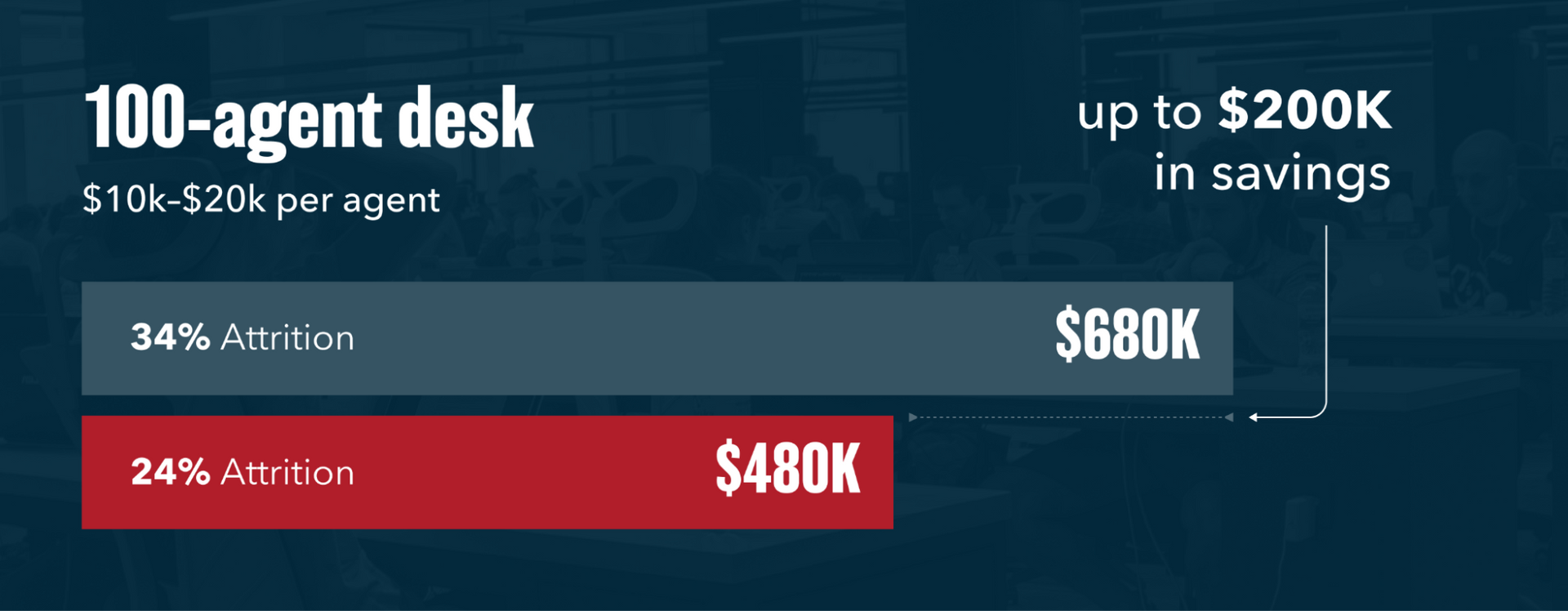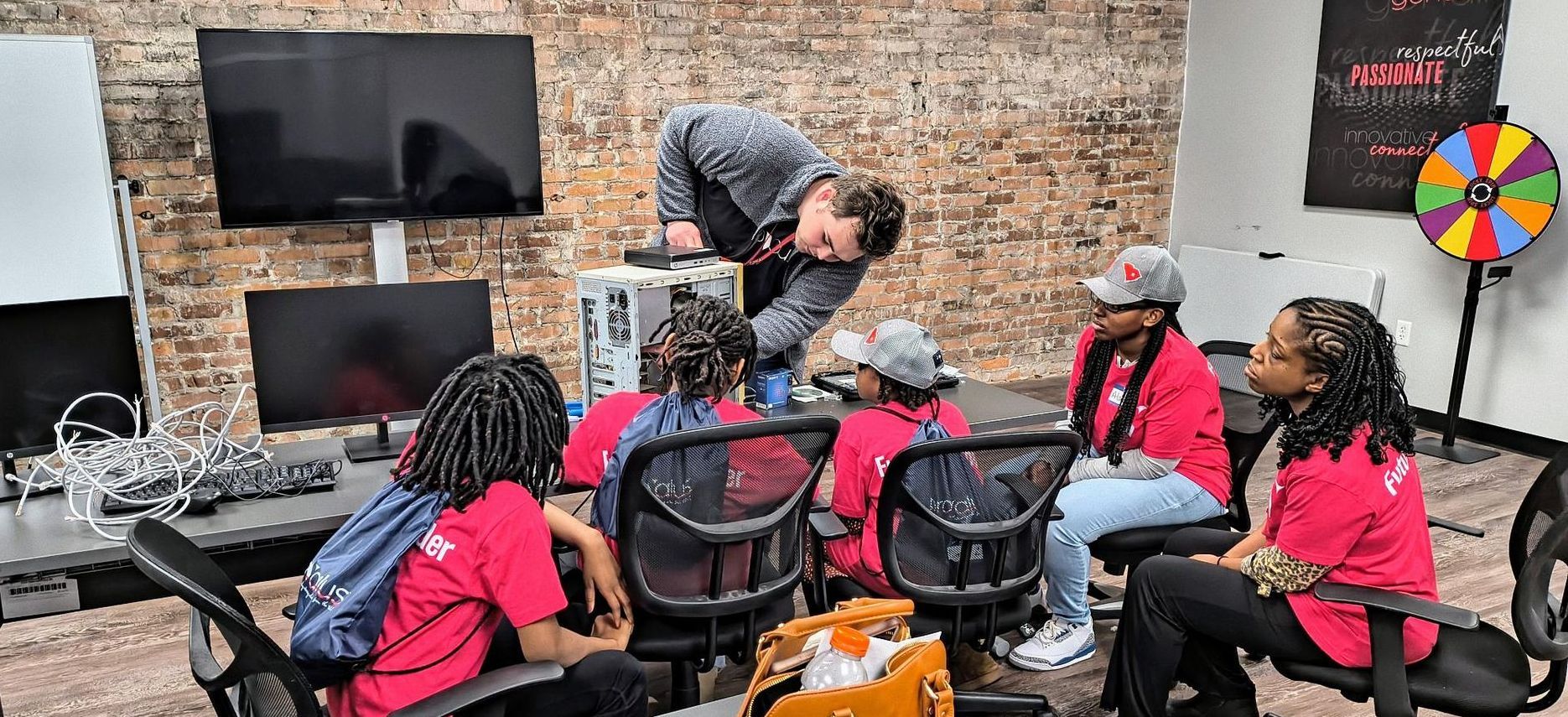
Veteran‑forward hiring improves customer experience and service desk outcomes. Veterans bring calm under pressure and a strong Standard Operating Procedure (SOP) mindset, which supports better first‑contact resolution, steadier quality, and lower churn. The result is more reliable delivery, fewer escalations that erode loyalty, and a healthier leadership pipeline that keeps standards high as programs scale.
Veterans lift first‑contact resolution by staying calm and following SOPs
Veteran talent helps agents keep conversations on track when emotions run high. A steadier tone and step-by-step execution reduce avoidable escalations, which is the fastest path to higher first‑contact resolution.
Current state of most desks
- Peak periods, outages, or billing issues raise caller emotion. Under stress, agents drift from scripts and skip steps, which lowers Quality Assurance (QA) scores and pushes more contacts into multi‑touch resolution.
- First Contact Resolution (FCR) is highly sensitive to consistency. When teams wobble on SOPs, callbacks and transfers follow, and customers feel the friction.
- Supervisors often report that the same few failure modes repeat: missing verification, incomplete documentation, or a skipped troubleshooting step. These are preventable with discipline and practice.
What works in practice
- Veterans are trained to perform under stress: 96% of HR professionals report that veterans are uniquely prepared for high‑pressure situations (SHRM Foundation, 2024). Surveys of HR leaders show overwhelming confidence in veterans’ readiness for high‑pressure situations. That temperament translates to calmer conversations during outages or incident spikes.
- SOP culture fits the work. Army doctrine emphasizes standard operating procedures, checklists, and playbooks that hold up when the pressure rises (U.S. Army ATP 3-90.90). That maps cleanly to service desk runbooks and CX workflows, where one missed step derails resolution.
- Better adherence supports FCR. When agents stay calm and follow the steps, fewer calls escalate and more issues close on the first touch. Even a small FCR lift is noticeable to customers and compounds in operations; industry benchmarking associates a 1‑point FCR gain ≈ $286,000 in annual savings for a midsize center (SQM Group, 2024).

Veteran hiring stabilizes teams and strengthens leadership
Retention is the quiet driver of CX performance. Veteran cohorts are more likely to stay through the early months and progress into leadership sooner, which reduces expensive backfills and keeps quality coaching close to the work.
Current state of attrition
- Contact center attrition commonly sits near one‑third of headcount each year, with ~31% mean attrition in 2023 across U.S. centers (ContactBabel, 2024). Knowledge walks out the door with every exit, slowing queues and inflating error rates while replacements ramp.
- Replacing a single agent typically costs $10k–$20k once recruiting, training, and lost productivity are included (McKinsey, 2020). Early churn hurts most because it repeats the cycle before value is created.
- Thin leadership benches increase variability. When Team Leader (TL) or Subject Matter Expert (SME) roles turn over, standards slide, and FCR and QA follow.
What works in practice
- Veterans tend to stay through the early window. Labor‑market analyses show veterans are less likely than nonveterans to leave their first job within six months (LinkedIn Veteran Opportunity Report), the period when most backfills occur.
- Veterans move up faster. Veterans are about
39% more likely to be promoted earlier than nonveterans (LinkedIn Veteran Opportunity Report), strengthening the pipeline for TL and SME roles that stabilize quality on the floor.

- Illustrative impact. On a 100‑agent desk running at 34% annual attrition, trimming to 24% prevents roughly 10 exits. Using a conservative replacement‑cost band of $10k–$20k per agent, that is $100k–$200k in avoided expense before any quality or overtime effects. The bigger win is continuity: fewer resets, steadier coaching, and cleaner audits.
Veterans bring built‑in compliance and security discipline
Many desks touch sensitive data. Veterans arrive with repeated security awareness training and a habit of following rules of behavior, which lowers the odds of avoidable handling mistakes.
Risk reality in regulated programs
- Under pressure, shortcuts appear: partial verification, incomplete notes, unsecured copy‑and‑paste of identifiers, or skipped disclosures. Each miss creates rework and audit exposure.
- Clients in health care, financial services, and the public sector expect consistent documentation and policy adherence. Variance increases remediation cost and slows time to close.
Habits that reduce risk
- Annual cyber awareness is standard in the military. Veterans bring a baseline understanding of phishing, removable‑media risk, and data handling that many new hires build only after months on the job (DoD CDSE/DCSA; Cyber Awareness Challenge, 2025).
- Accountability and mission focus travel well. Employer guidance highlights traits that matter in customer-facing operations: personal ownership, performance under pressure, and quality delivery (U.S. Department of Labor VETS Employer Guide, 2025). In practice, this shows up as cleaner documentation and fewer policy exceptions during QA checks.
- Operational effect. Cleaner execution reduces rework and keeps escalations focused on true edge cases rather than preventable errors.
How Provalus operationalizes veteran talent
Provalus integrates veteran talent into on‑site, onshore delivery. The model pairs disciplined hiring with structured training and clear progression so clients get steadier teams and predictable performance.
Where we start today
- Workforce snapshot: approximately 7% veterans, 29.4% military families, and 3.5% military spouses.
- Delivery centers are located in U.S. communities with strong military roots, creating a dependable, mission‑driven talent pool.
How the model performs
- Structured onboarding links SOPs to call flows and ticket paths so new hires, including veterans, can translate experience into measurable results quickly.
- Coaching and certification pathways move proven performers into TL and SME roles, reinforcing standards on the floor.
- The outcome for clients is reliability: steadier coverage, better documentation, and fewer avoidable escalations.
References
- SHRM Foundation. “The Business Case for Hiring Veterans and Military Spouses,” factsheet, 2024.https://www.shrm.org/content/dam/en/shrm/foundation/inclusion-captains-veterans-vaw-overview-factsheet.pdf
- LinkedIn. Veteran Opportunity Report (landing + summary).https://socialimpact.linkedin.com/programs/veterans/veteran-opportunity-report ; summary PDFs referencing LinkedIn data:https://web.uri.edu/wp-content/uploads/sites/1069/Veteran-Resource-for-Employers.pdf ;https://web.uri.edu/wp-content/uploads/sites/1069/Veteran-Summary-LinkedIn.pdf
- ContactBabel. The 2024 US Contact Center Decision‑Makers’ Guide (attrition series, 2023 mean 31%).https://assets.ringcentral.com/us/report/us-dmg-2024.pdf
- McKinsey & Company. “Customer care: The future talent factory,” 2020. Attrition cost $10k–$20k.https://www.mckinsey.com/~/media/McKinsey/Business%20Functions/Operations/Our%20Insights/Customer%20care%20The%20future%20talent%20factory/Customer-care-The-future-talent-factory.pdf
- U.S. Department of Labor, VETS. Employer Guide to Hiring Veterans, 2025.https://www.dol.gov/sites/dolgov/files/VETS/files/Employer-Guide-to-Hiring-Veterans2025-07.pdf
- U.S. Army. ATP 3‑90.90 Army Tactical Standard Operating Procedures, 2011.https://www.globalsecurity.org/military/library/policy/army/atp/atp3-90-90.pdf
- DCSA/CDSE & DoD Cyber Exchange. “Cyber Awareness Challenge” and annual refresher guidance, 2024–2025.https://www.cdse.edu/Training/eLearning/IF142/ ;https://securityawareness.dcsa.mil/ ;https://www.cyber.mil/cyber-awareness-challenge
- SQM Group. First‑Contact Resolution and OPEX impact context, 2024.https://www.sqmgroup.com/resources/library/blog/fcr-metric-operating-philosophy ;https://www.sqmgroup.com/resources/library/blog/call-center-fcr-benchmark-2024-results-by-industry












